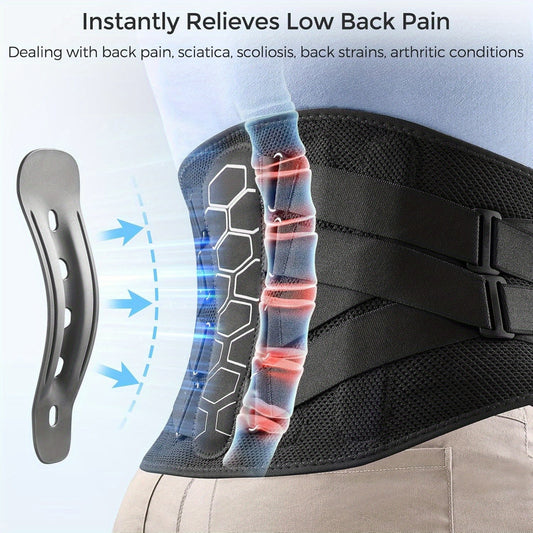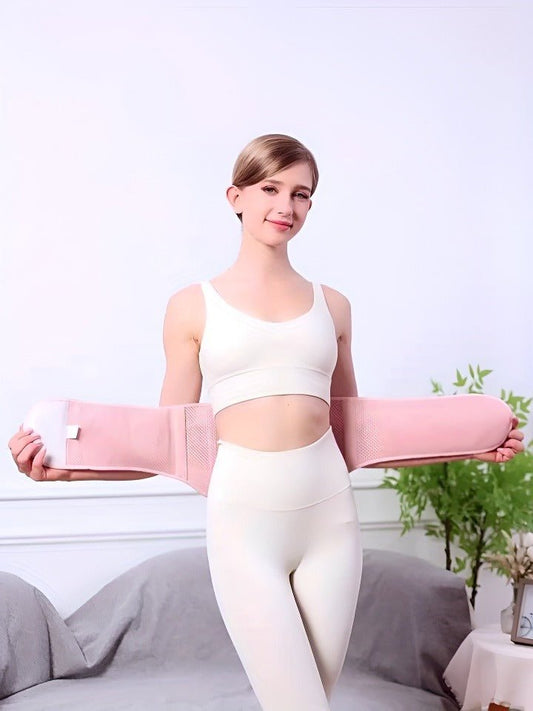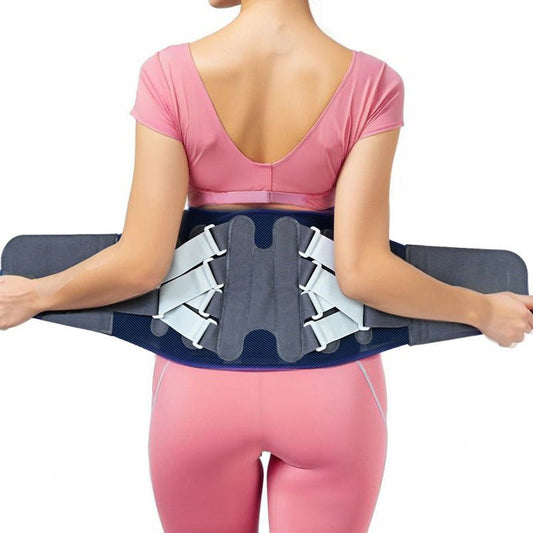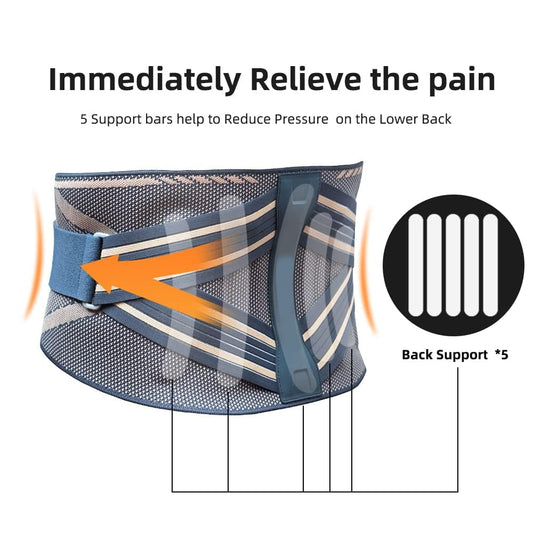The Complete Guide to Back Braces for Herniated Disc Relief - Evidence-Based Solutions
Share
Medically reviewed by the FuSup Wellness Team.
Last updated: September 22, 2025.
Category: Injury Science & Recovery
Understanding Your Pain: The Herniated Disc Reality
A herniated disc affects millions of people worldwide. It turns simple daily tasks into painful challenges. You might struggle to sit at work. You may feel shooting pain down your leg. Bending forward becomes difficult. You're not alone in this journey.
The Challenge: Your doctor recommends rest and conservative treatment. But you still need to function in daily life. You've heard mixed advice about back braces. Some say they're essential. Others warn they'll weaken your muscles.
The Solution: This guide will help you understand how a back brace can support your recovery. We base our advice on current medical research and real-world use.
What Happens When a Disc Herniates?
Your spinal discs work as shock absorbers between your spine bones. Each disc has a tough outer layer and a gel-like center. A herniated disc happens when the tough outer shell tears. The gel-like fluid bulges or leaks out. This bulge can press on nearby nerves. This causes:
- Intense lower back pain
- Sciatica (leg pain that shoots down)
- Numbness or tingling
- Muscle weakness

The Science Behind Back Brace Effectiveness
Medical research supports using back braces for herniated disc pain. Here's how they work:
1. Spine Stability and Motion Control
Good back braces help stabilize your spine. They reduce small movements at the problem area. They limit bending and twisting that can make pain worse.
2. Weight Distribution and Pressure Relief
When you wear a brace, it applies pressure to your torso. This helps hold your spine in the right position. It shifts weight from your spinal column to your abdomen. This helps by:
- Reducing pressure on the herniated disc
- Decreasing nerve irritation
- Giving healing tissues time to recover
3. Better Posture and Body Awareness
A quality brace reminds you to keep proper spine alignment. It prevents slouching and forward head posture. These positions can make disc symptoms worse.

When Should You Consider a Back Brace?
During Severe Pain (First 2-6 weeks):
- When you have intense pain episodes
- When basic movements cause major discomfort
- As part of initial treatment
For Specific Activities:
- Long periods of sitting (office work, driving)
- Light physical activities during recovery
- When moving from rest back to normal activity
For Recovery and Prevention:
- When slowly returning to work or daily tasks
- During rehab exercises (as your doctor recommends)
- To prevent re-injury while healing
Important: A back brace won't cure your herniated disc. But it can help reduce pain and improve function when used correctly.
Choosing the Right Back Brace: Key Features
Support Level Types
Semi-Rigid Braces (Best for Herniated Discs):
- Give the right balance of support and movement
- Have rigid stays or panels for structure
- Allow controlled movement while preventing harmful motions
Key Features to Look For:
-
Adjustable Compression System
- Pulley systems or dual-strap design
- Lets you customize support level during the day
- Easy to adjust without taking the brace off
-
Shape That Fits Your Body
- Follows your natural lower back curve
- Wide back panel spreads out pressure
- Comfortable fit that doesn't bunch up
-
Breathable Materials
- Fabrics that wick away moisture
- Holes or mesh panels for air flow
- Prevents overheating during long wear
- Proper Sizing and Fit
-
- Clear measurement guidelines
- Different sizes for different body types
- Secure fit without being too tight
FuSup's Research-Based Solutions
At FuSup, we design our back braces based on medical research and user feedback:
CoreFlex - Maximum Support for Severe Pain
Best for: Severe pain episodes and early recovery phase
- Features multiple high-strength stabilizers for robust spinal support.
- Dual-strap system allows for customized, firm compression.
- Ergonomic, wide back panel for optimal load distribution.
- Medical-grade materials for extended wear comfort.

CoreLite - Balanced Support for Active Recovery
Best for: Transitioning back to daily activities
- Ultra-lightweight and breathable design for all-day comfort.
- Flexible support system that moves with your body.
- Perfect for office work, light physical activity, and travel.
- Streamlined profile for discreet wear under clothes.

How to Use Your Brace Safely
When to Wear It
- Starting out: 2-4 hours during activities that cause pain
- Never: All day and night without doctor approval
- Gradual reduction: Less time as pain decreases and you get stronger
How to Put It On
- Put brace on while standing with straight spine
- Place lower edge just above your hip bones
- Tighten slowly - firm support without restricting breathing
- Adjust tightness based on activity level and comfort
When to Stop Using It
- Skin irritation or allergic reactions
- Increased pain or new symptoms
- Muscle spasms caused by the brace
- If symptoms continue beyond expected recovery time
Using Your Brace as Part of Complete Recovery
A back brace works best with a full treatment plan:
Medical Care:
- Follow your doctor's advice
- Regular check-ups on your progress
- Take medications as prescribed
Physical Therapy:
- Gentle exercises approved by your therapist
- Slow strengthening program
- Flexibility and movement work
Lifestyle Changes:
- Good posture at work and home
- Better sleep positioning
- Modify activities during healing
Pain Management:
- Heat/cold therapy (use separately from brace)
- Stress reduction methods
- Get enough rest and recovery time
Common Questions Answered(FAQ)
Q: Will wearing a brace make my muscles weaker?
A: When used correctly (not 24/7), braces support healing without major muscle weakness. The goal is short-term support during painful times. Then you start strengthening exercises.
Q: How long should I use a back brace?
A: Most people use a brace for 2-8 weeks. This depends on how severe your condition is and how you recover. Always follow your doctor's advice.
Q: Can I exercise while wearing a brace?
A: Light walking and prescribed exercises are often good. Avoid heavy lifting or high-impact activities unless your doctor says it's okay.
Q: Should I sleep in my brace?
A: Usually not recommended unless prescribed after surgery. Focus on proper sleep position and supportive bedding instead.
Making the Right Choice
Choosing a back brace for herniated disc recovery is an important step in healing. Think about these factors:
- How bad your symptoms are: More severe pain may need higher support levels
- Your daily activities: Match brace features to what you need to do
- What stage of recovery: Different phases may need different support types
- Professional advice: Always talk with your healthcare provider
Your Path to Recovery
A herniated disc can be challenging. But with the right support tools and treatment plan, most people get much better. A well-designed back brace can provide the stability and pain relief you need. This helps you start your recovery with confidence.
Remember: every recovery is different. What works best for you depends on your specific condition, lifestyle, and how you respond to treatment. Use this guide as a starting point. But always prioritize professional medical advice for your specific situation.
Ready to take the next step in your recovery? Explore our scientifically-designed CoreFlex and CoreLite braces, engineered specifically for herniated disc support and recovery.








